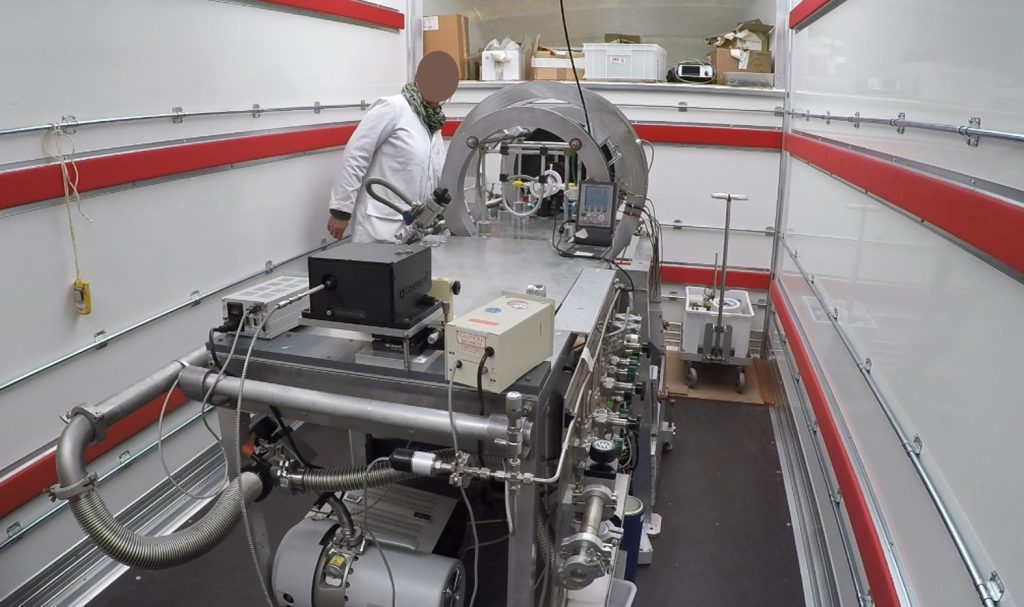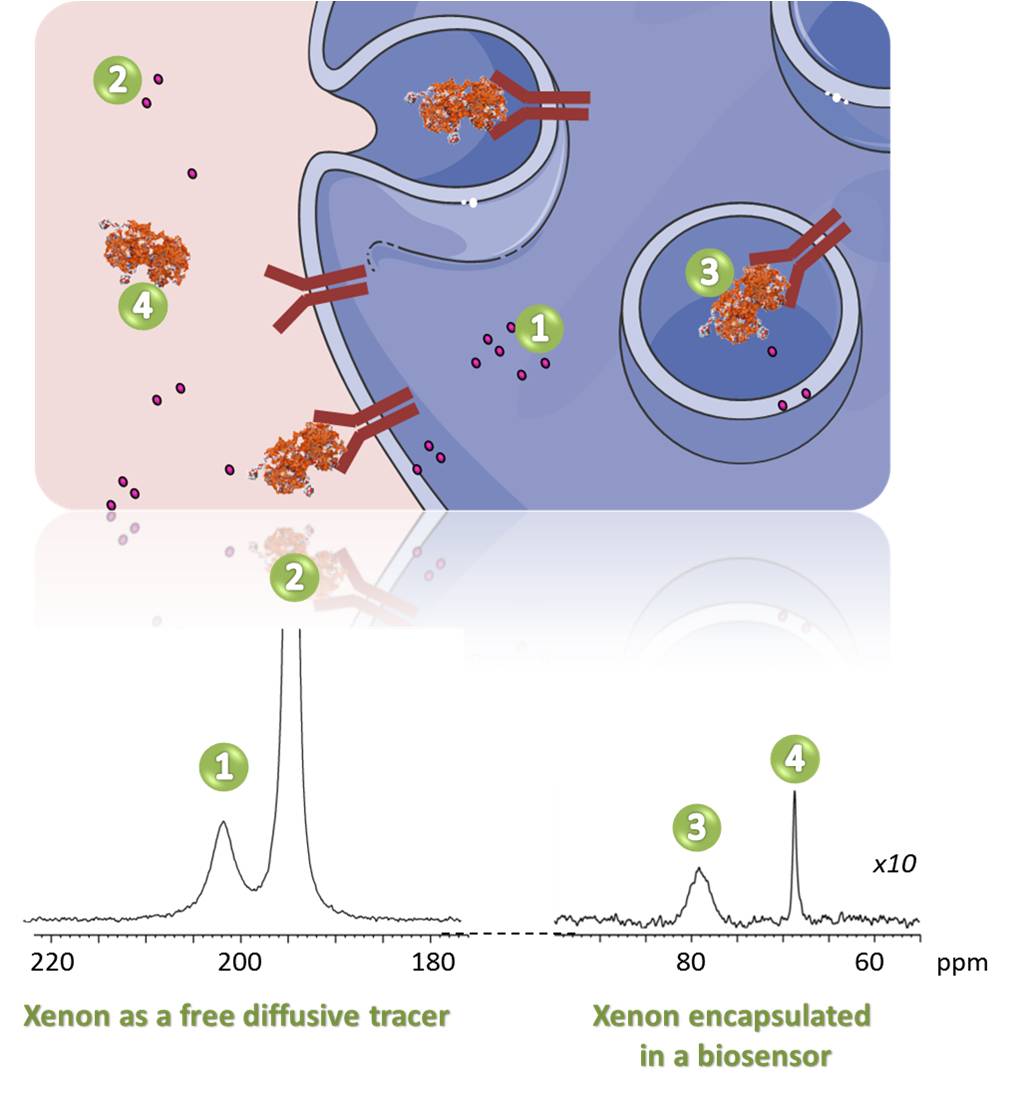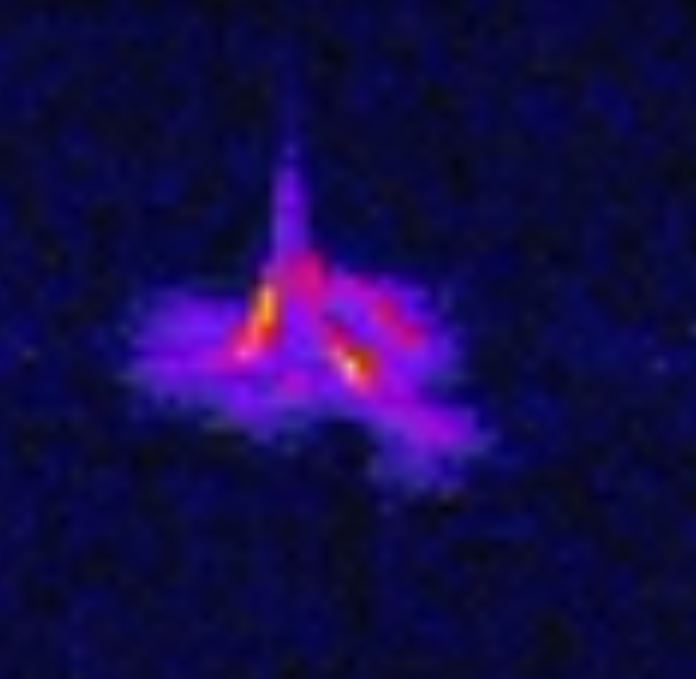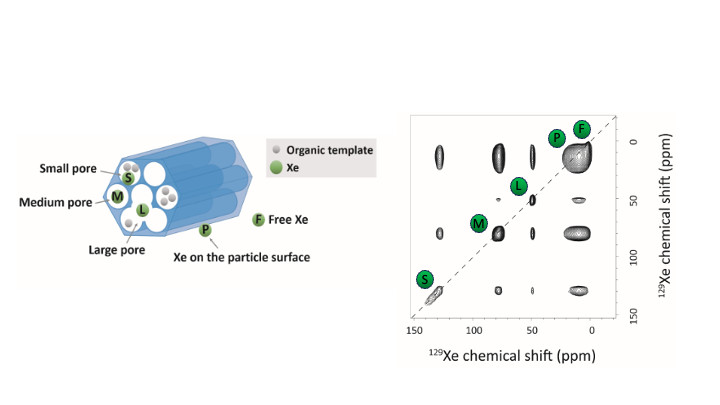In LSDRM, noble gases are hyperpolarized via spin-exchange optical pumping (SEOP) and serve as sensitive probes in magnetic resonance. In particular, xenon is used as it has large, deformable electron cloud that makes it highly sensitive to its direct environment, resulting in wide variability of its NMR parameters and thus spectacularly rich spectra and application ranges. The out-of-equilibrium polarization implies the development of a specific NMR methodology involving the design of non-standard pulse sequences and protocols.
New developments in hyperpolarization
Mobile optical pumping
LSDRM has developed a SEOP set-up that can be installed in a van and brought to other laboratories. With this set-up, several milliliters of xenon with a polarization of ca. 0.251 can be obtained in just a few minutes directly at the site of use.
1 For comparison, the 129Xe thermal polarization in a field of 11.7 T is ca. 10-5.

High-field optical pumping
Building on its expertise in instrumental development, LSDRM is currently working on the development of an optical pumping set-up directly at the heart of an NMR magnet, in a magnetic field of 7 Tesla. These developments will enable us to better understand the physics of optical pumping via atomic spectroscopy and, ultimately, to bring the polarization zone closer to the NMR detection zone, which is fundamental, for example, to the detection of quadrupolar nuclei with very short relaxation times.
Applications in biological sciences
In vitro studies
Hyperpolarized 129Xe can be used for studying cell suspensions according to two different strategies:
- Alone, as a free diffusive tracer. Xenon enters the biological cells in some tens of milliseconds without losing its hyperpolarization. Xenon in the inner compartment of living cells (1) gives rise to a specific frequency different from that of xenon in the culture media (2), providing data such as the nature of the cell line, density and viability.
- Encapsulated in a host molecule (4) to detect a specific biological mechanism; for instance, the uptake of a protein by a cell (3). The tailored biosensors are constituted by grafting a biological ligand onto a xenon host system.

In vivo studies
MRI experiments on living rodents are undertaken to:
- Use xenon as a probe of membrane permeability (gas-blood ; blood-brain-barrier).
- Propose a new approach for the longitudinal monitoring of pathologies using vectorized xenon. 129Xe NMR-based biosensors designed to target a pulmonary disease are instilled in the lungs of the anesthetized animal. The acquisition is then performed just after the introduction of hyperpolarized xenon, which can occur many times and several tens of minutes after the biosensor instillation.

Applications in material sciences
Xenon is a powerful probe to explore confined media such as porous materials. Combined with instrumental and methodological developments that enable materials to be perfused with the hyperpolarized gas, xenon NMR provides invaluable information on the nature, size of pores, as well as on their connectivity.





